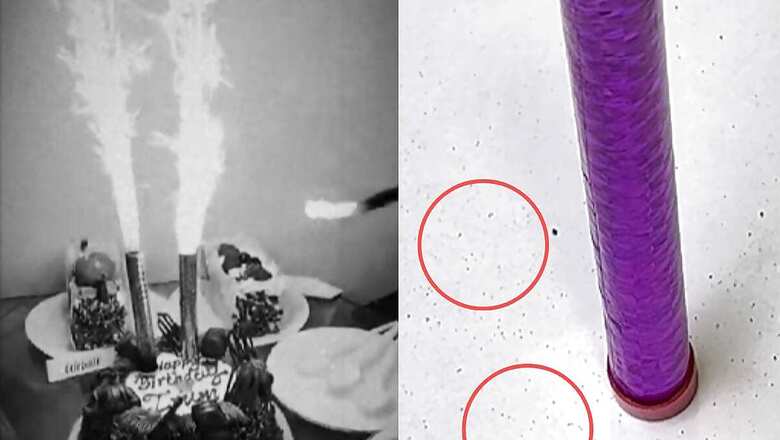
views
Long gone are the days when those twinkling, lengthy candles were a rare sight in India. Nowadays, every birthday bash involves these illuminating sticks adorning cakes, waiting to be lit before the big slice. While most people are vaguely aware that these candles aren’t exactly safe, a YouTuber recently provided a detailed explanation of the potential harm caused by these ‘Anar’ candles through a live experiment.
In his YouTube video, Ashu Ghai, also known as Ashu Sir, demonstrated the hazards of Anar candles. By placing one of these candles on a white sheet of paper and lighting it, Ghai showed the release of harmful substances. The experiment revealed that the candles contain elements like iron, copper, zinc, aluminium, and magnesium compounds. When burned, these elements transform into oxides and carbonates, which are harmful to health.
Also Read: Man Cuts Papaya Instead Of Cake On Birthday, Netizens Say ‘Would Rather Not Celebrate’
He suggested either avoiding Anar candles altogether or burning them away from the cake to prevent inhaling these hazardous particles, garnering appreciative responses from viewers who found his insight invaluable.
Take a Look:
View this post on Instagram
As if concerns about candles weren’t enough, a viral video further cast doubts on the safety of buying or consuming cakes from outside. This video, revealing the behind-the-scenes of fruit cake production, sparked widespread disapproval. It begins with a man, using his bare arm, vigorously mixing cake batter, and even submerging his arm beyond the elbow into the mixture. After the thorough mix, he wipes off the remnants and continues with the process, including cracking eggs and pouring batter into trays.
The footage, thus, serves as a stark reminder of the unseen processes behind the cakes we enjoy, prompting many to reconsider their bakery choices.
Also Read: Never-ending Staircase? Old Video of Mysterious Phenomenon Has Internet Scratching Heads Again
After all, in the end, it’s not just about blowing out candles or slicing into a cake; it’s about understanding the hidden risks and making informed choices. As Ashu Sir and others highlight these issues, they prompt a collective reflection on the ways we celebrate and consume, pushing us towards a more conscientious approach to our daily rituals.




















Comments
0 comment